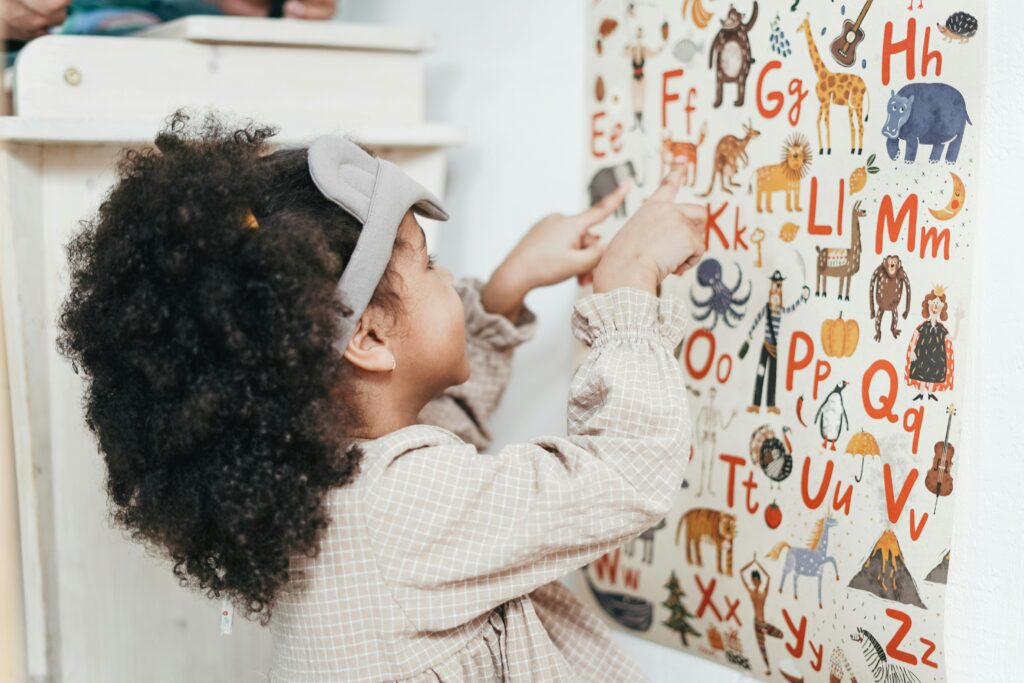The new year is the perfect time to focus on learning and growth. By helping your child set educational goals tailored to their interests, you can do just that. To help you set up your child for a successful 2025, we’ll share examples of personal goals for students in this article.

What Are Educational Goals?
Educational goals are academic benchmarks and personalized achievements that guide your child as they learn new things. These goals can include developing different skill sets, cultivating healthy habits, or mastering a challenging subject. By setting clear, attainable objectives, children learn responsibility, perseverance, and the value of hard work. Some of the other benefits of setting educational goals for your child early on include:
- Confidence: Achieving goals helps children to recognize how capable they really are, which can increase self-esteem.
- Accountability: Learning to set and pursue goals at an early age helps kids to take ownership of their actions and feel more responsible for their progress.
- Problem-solving skills: Setting goals often involves overcoming challenges, which fosters critical thinking and builds resilience.
The Role of Parents
When it comes to helping children set and achieve educational goals, parents play one of the biggest roles. Over half of parents with children aged 11-18 report that their kids have already set personal goals, ranging from improving grades to trying new activities. You can guide your child’s journey by discussing their aspirations, setting achievable objectives, and celebrating milestones. To help you get started, here are some examples of realistic student goals:
- Academic: Complete all math homework before 7 p.m. each day to improve time management.
- Skill development: Learn to play a simple song on the piano by practicing for 10 minutes daily.
- Social: Invite a new classmate to play during recess once a week to build friendships.
- Physical: Exercise three times a week by riding a bike or practicing a sport.
When parents lead by example and encourage goal setting, children will develop essential skills and build positive habits that create a foundation for lifelong success.
Crafting Effective Educational Goals for Your Child
One proven method for creating impactful goals is the SMART framework, meaning that goals are specific, measurable, achievable, relevant, and time bound. SMART goals are structured to help children focus their efforts and measure their progress. Here are some steps you can take to adopt this approach, as well as examples of SMART education goals.
Specific
Goals should clearly define what your child wants to accomplish. Avoid vague objectives, such as “do better in school,” and instead focus on a specific area of improvement. Here are some examples of specific goals:
- Example 1: Complete all math assignments by their due dates each week.
- Example 2: Learn five new vocabulary words daily for the next two weeks.
- Example 3: Participate at least once in every daily class discussion.
Measurable
Tracking progress can boost motivation and accountability. Goals should include tangible metrics to evaluate success, such as:
- Example 1: Read 20 pages of a book each evening before bed.
- Example 2: Score at least 85% on the next three spelling tests.
- Example 3: Write three practice essays before the midterm exam.
Achievable
While ambitious goals can be inspiring, they should also be realistic and attainable. Breaking larger goals into smaller steps makes them more manageable. Here are some achievable goal examples:
- Example 1: Improve my math grade from a C to a B.
- Example 2: Practice the piano for 15 minutes daily to master one new song.
- Example 3: Join the school soccer team by attending all tryout sessions.
Relevant
Goals should align with your child’s interests, needs, or academic priorities. This will help the goals you create together to remain meaningful so your child stays engaged. Note the following examples:
- Example 1: Improve writing skills to prepare for the creative writing competition next quarter.
- Example 2: Learn coding basics to build a simple game for the science fair.
- Example 3: Memorize multiplication tables to excel in math challenges.
Time Bound
Deadlines help children to stay focused and ensure steady progress. Without a timeline, goals may lose their urgency. Here are some examples of time-bound goals:
- Example 1: Finish reading two books by the end of the month.
- Example 2: Practice Spanish vocabulary flashcards three times a week until the final exam.
- Example 3: Prepare a presentation on a science topic within the next two weeks.
Tips To Help Your Child Reach Their Goals
Now that we’ve shared some examples of various goals, are you ready to support your child as they grow? Below are some extra strategies to inspire success.
Encourage Ownership
Children are more likely to stay motivated when they set goals that genuinely matter to them. Start by discussing their aspirations and encouraging them to select one meaningful “big goal.” Ask questions, such as:
- What’s a challenge you’d love to overcome?
- What skill would you like to improve this year?
- What’s something new you’d like to learn this month?
Break Goals Into Manageable Steps
Help your child transform large goals into smaller, actionable tasks. This approach makes objectives feel less overwhelming and more achievable. Use tools, such as a goal ladder, to visually map out milestones. If your child wants to get an A in their math class, for example, you might break this down into several steps, including:
- Complete all homework assignments on time.
- Review past quizzes every Saturday.
- Spend 15 minutes daily on a math app for extra practice.
Offer Consistent Encouragement
Be your child’s biggest cheerleader. Celebrate small victories, provide consistent feedback, and remind them why they’re doing it. Knowing that you value their hard work can help them maintain motivation and achieve success.
Anticipate Challenges
Every goal comes with obstacles. Teach your child to anticipate potential setbacks and develop strategies to overcome them. It can help to use the WOOP method, which means Wish, Outcome, Obstacle, and Plan. For example, if your child’s goal is to write a five-paragraph essay this month, remind them that if they get stuck, they can ask their teacher for help during office hours.
Overcoming Challenges and Maintaining Motivation for Long-Term Success
Setting educational goals for your child is a powerful way to build confidence, resilience, and a love for learning. At Crème de la Crème, we understand the importance of personalized education and the role parents play in shaping their child’s future. Discover how our approach can help your child thrive by exploring our education philosophy and scheduling a tour today.
Girl Pointing on Alphabets by cottonbro studio is licensed with Pexels License
